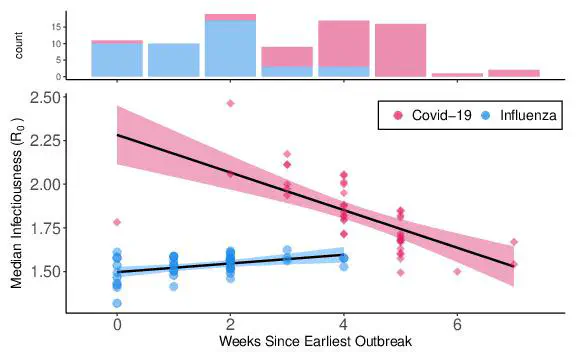Comparisons of Covid-19 Outbreak Dynamics across space and time

The large spatial scale, geographical overlap, and similarities in transmission mode between the 1918 H1N1 influenza and 2020 SARS-CoV-2 pandemics together provide a novel opportunity to investigate relationships between transmission of two different diseases in the same location. To this end, we use initial exponential growth rates in a Bayesian hierarchical framework to estimate the basic reproductive number, R0, of both disease outbreaks in a common set of 43 cities in the United States. By leveraging multiple epidemic time series across a large spatial area, we are able to better characterize the variation in R0 across the United States. Additionally, we provide one of the first city-level comparisons of R0 between these two pandemics and explore how demography and outbreak timing are related to R0. Despite similarities in transmission modes and a common set of locations, R0 estimates for COVID-19 were uncorrelated with estimates of pandemic influenza R0 in the same cities. Also, the relationships between R0 and key population or epidemic traits differed between diseases. For example, epidemics that started later tended to be less severe for COVID-19, while influenza epidemics exhibited an opposite pattern. Our results suggest that despite similarities between diseases, epidemics starting in the same location may differ markedly in their initial progression.
This work has been published in PNAS: Nexus with open access available to the public, read it here!